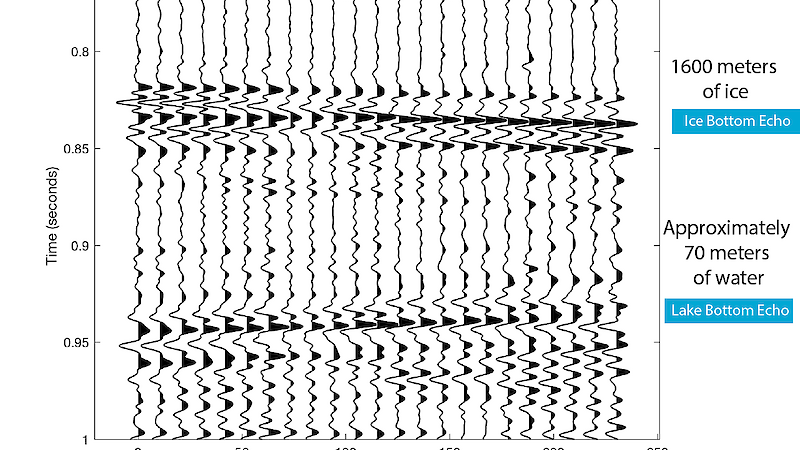The seismic study* led by Dr Ben Galton-Fenzi of the Australian Antarctic Division, used a series of small explosions about two metres below the surface of the Totten Glacier. The explosions sent out sound waves, which echoed off different layers in the ice and bedrock (see figure).
The international team spent 160 days working on the glacier, near Casey research station, to find out if there is bedrock or water — as subglacial lakes or ocean — under the ice.
“We placed geophones along the surface of the glacier to listen to the reflected sound, giving us a picture of what lies beneath the ice,” Dr Galton-Fenzi said.
“This study has shown, for the first time, that there are substantial amounts of water under the Totten Glacier, contained in subglacial lakes, not far from the ocean.”
The flow of water in and out of these lakes could exert a powerful control on the rate that the ice flows into the oceans. Understanding this water flow is critical to helping predict how the melting of Antarctic glaciers will change the world’s oceans into the future.
“If there’s bedrock under a glacier, it’s sticky and the glacier will move more slowly. But if there’s water or soft sediments, the glacier will move faster,” Dr Galton-Fenzi said.
The Totten Glacier drains a catchment of 538,000 square kilometres, containing enough ice to raise sea level by seven metres. However, the area of the glacier thought to be vulnerable to a warming climate has the potential to raise global sea level by about 3.5 metres (Australian Antarctic Magazine 28: 13–14, 2015). More research is needed to accurately predict the rate at which this melting could occur.
Nisha Harris and Wendy Pyper
Australian Antarctic Division
*Australian Antarctic Science Project 4287, supported by the Australian Research Council Antarctic Gateway Partnership, Antarctic Climate and Ecosystems Cooperative Research Centre, and Australian Antarctic Division.

